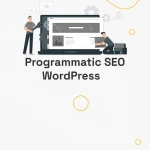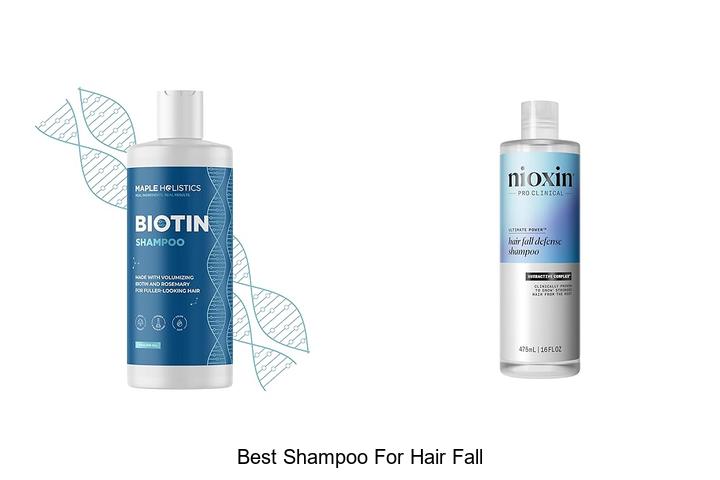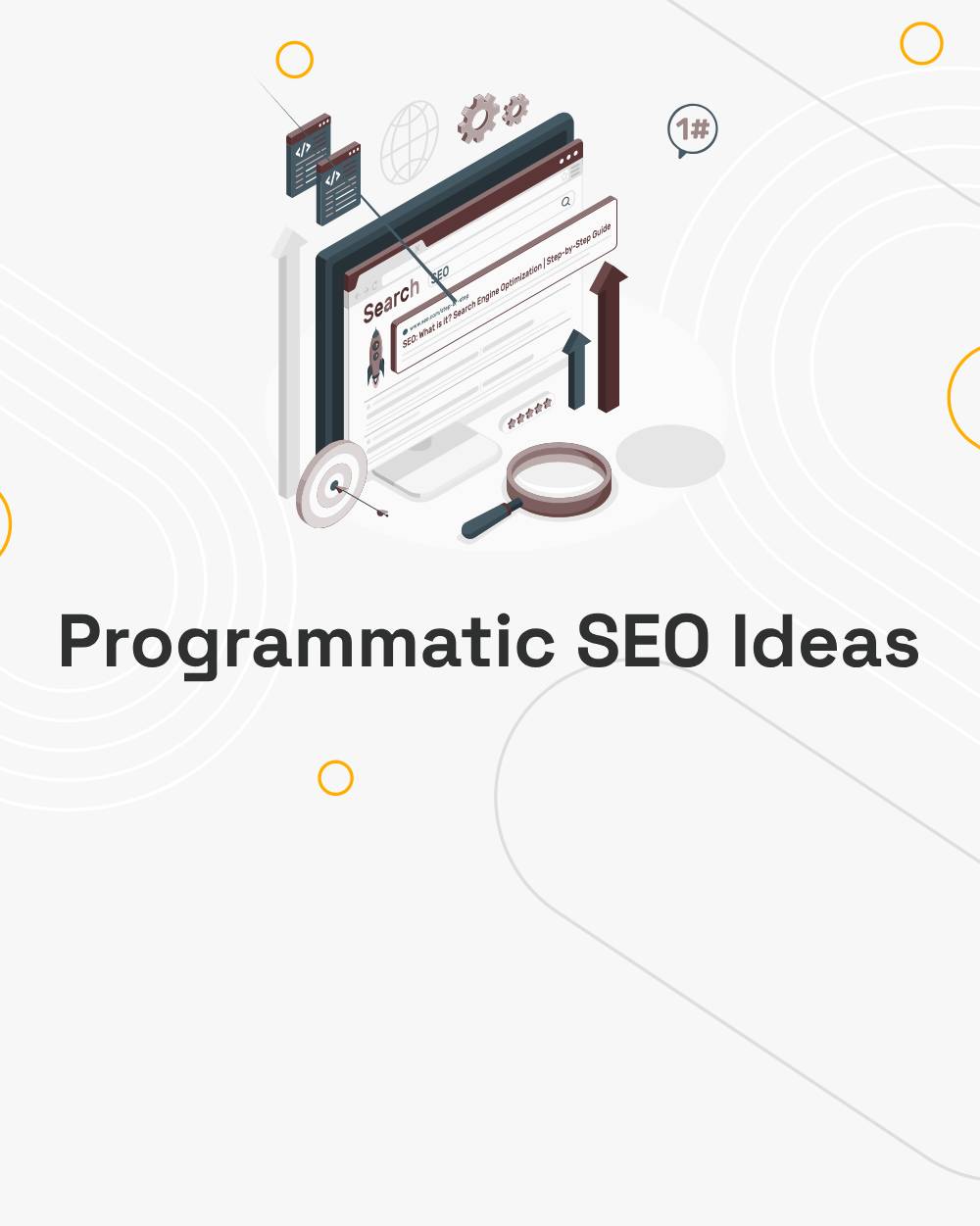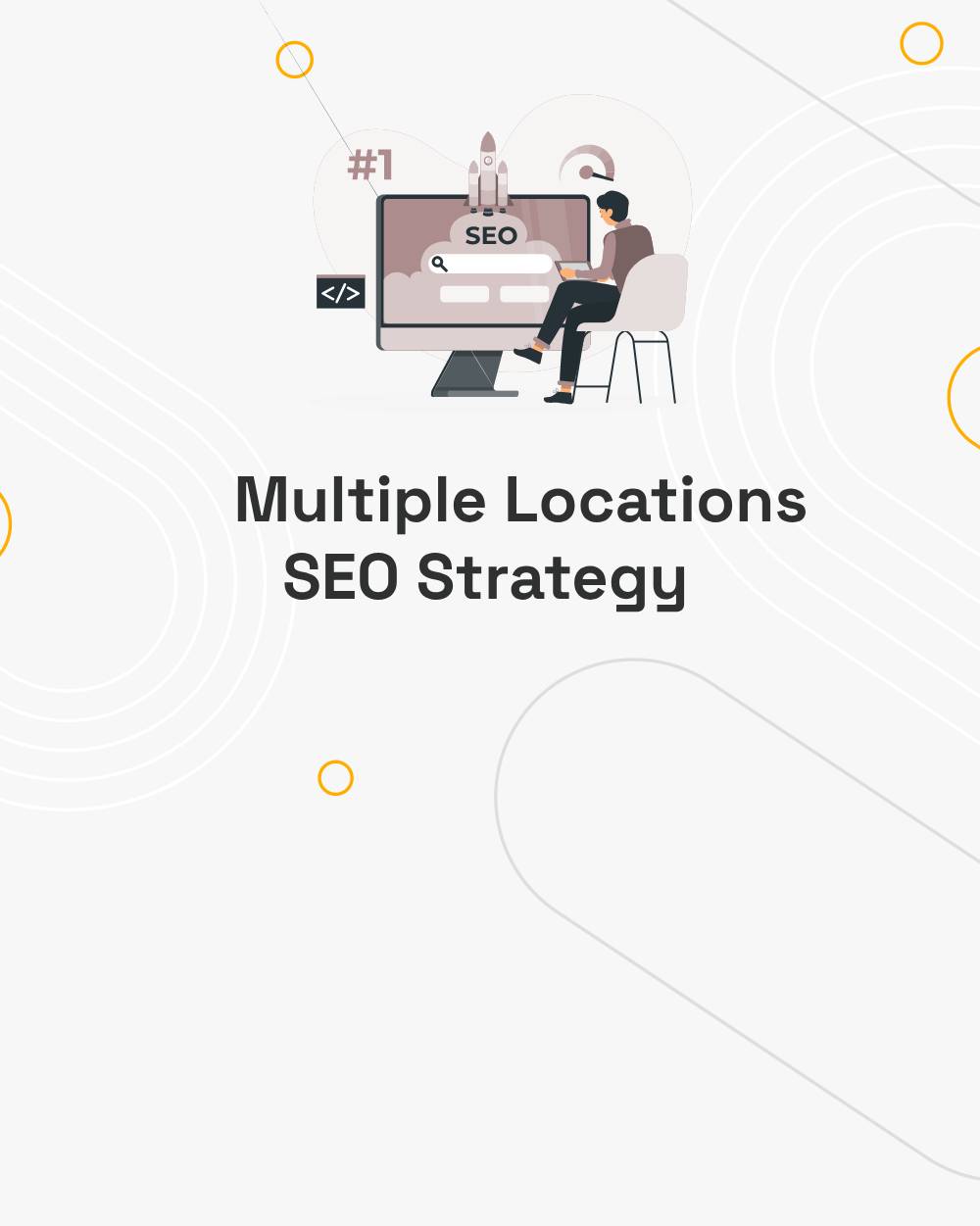In the digital age, where businesses compete for online visibility, programmatic SEO has emerged as a powerful strategy to scale search engine optimization efforts. It leverages automation and data to create and optimize a large number of web pages, helping businesses rank higher and attract targeted traffic. Here, we explore how programmatic SEO works and its key components.
What is Programmatic SEO?
Programmatic SEO refers to the process of using algorithms, templates, and structured data to create web pages at scale. Unlike traditional SEO, which focuses on optimizing individual pages, programmatic SEO enables the creation of thousands or even millions of pages targeting specific keywords, geographic locations, or user intents.
This approach is particularly beneficial for websites that rely on user-generated content, e-commerce stores with extensive product catalogs, travel platforms with numerous destinations, or marketplaces featuring a vast range of services.
Technical Aspects of Programmatic SEO
Programmatic SEO is a highly scalable and automated approach to creating thousands of optimized web pages. However, the success of programmatic SEO depends largely on the technical framework and implementation. Below, we dive into the technical aspects that are essential for ensuring a successful programmatic SEO strategy.
1. Data Structure and Management
A. Data Sources
Programmatic SEO relies on structured data from various sources to generate content dynamically. These data sources can include:
- Databases: Internal product catalogs, inventory systems, or service directories.
- APIs: External APIs providing live data such as flight schedules, hotel availability, or job listings.
- Web Scraping: Tools like Scrapy or Beautiful Soup for gathering public data from other websites (ensuring legal compliance).
B. Data Normalization
Before using the data, ensure it is clean, organized, and ready for use:
- Eliminate duplicates.
- Fill in missing values.
- Standardize formats for consistency.
A well-structured dataset ensures the generation of high-quality and unique pages.
2. Template Design and Automation
A. Dynamic Templates
Programmatic SEO employs dynamic templates that pull in variable data points to populate pages. For example:
- A travel site can create templates for city-specific pages.
- An e-commerce platform can create templates for product categories.
Each template should include:
- SEO-friendly HTML structure: Proper use of heading tags, meta descriptions, and schema markup.
- Content placeholders: Fields for dynamic data like names, prices, locations, or images.
B. Content Personalization
Templates should allow for variations based on the data. This prevents duplicate content and ensures each page serves a specific intent. Tools like Python’s Jinja2 or custom CMS platforms help implement such templates.
C. Automation Tools
Automation frameworks, such as Python scripts, custom CMS plugins, or platforms like Webflow and WordPress (with programmatic plugins), streamline the creation of thousands of pages.
3. Site Architecture and Internal Linking
A. Logical Hierarchy
A clean and logical site structure is critical for crawlability and usability. Organize pages into clear categories and subcategories based on the data. For instance:
- A travel website might structure URLs as /destinations/country/city.
- An e-commerce site might use /products/category/subcategory.
B. Internal Linking
Automatically generated pages should be interlinked to improve user navigation and search engine crawlability. Use:
- Breadcrumb navigation for better hierarchy understanding.
- Contextual internal links within page content to relevant pages.
- XML sitemaps to help search engines discover and index all programmatic pages.
4. Search Engine Crawling and Indexing
A. Crawl Budget Optimization
Creating thousands of pages can overwhelm search engine crawlers. To ensure effective crawling:
- Use robots.txt to block low-priority pages.
- Submit XML sitemaps with only high-value pages.
- Limit broken or duplicate pages that waste crawl budget.
B. Canonicalization
To avoid duplicate content issues, implement canonical tags to tell search engines which version of a page to index.
C. Pagination and Infinite Scrolling
For large datasets, use proper pagination with rel=”prev” and rel=”next” tags or load content dynamically with infinite scrolling and ensure it’s crawlable using server-side rendering (SSR).
5. Dynamic Metadata Optimization
Each programmatically generated page needs unique metadata to align with its target keyword. Automate the generation of:
- Meta Titles: Include primary keywords and dynamic fields, e.g., “Buy {Product Name} Online – Free Shipping.”
- Meta Descriptions: Summarize the page content using data, e.g., “Find the best {Hotel Name} in {City} with amenities like {Feature 1}.”
- Header Tags: Ensure the H1 and subheadings are dynamically populated with relevant data.
6. Schema Markup
Structured data using schema.org markup helps search engines understand the content of pages. Programmatically add schema to your pages, such as:
- Product Schema for e-commerce.
- FAQ Schema for informational sites.
- LocalBusiness Schema for location-specific pages.
This enhances the chances of appearing in rich snippets or featured results.
7. Page Speed Optimization
Programmatically generated pages must load quickly to rank well and provide a good user experience. Optimize for:
- Lazy Loading: Load images and non-critical resources only when they’re visible to the user.
- Minimized Resources: Use compressed CSS, JS, and images.
- CDNs: Deliver assets via Content Delivery Networks for faster load times globally.
- Server Configuration: Ensure your hosting solution can handle high traffic from both users and crawlers.
8. Scalability and Server Infrastructure
A. Hosting Solution
Programmatic SEO involves the creation of thousands of pages, so your hosting infrastructure must be scalable and reliable. Consider:
- Cloud Hosting: Platforms like AWS, Google Cloud, or Azure for handling dynamic page generation.
- Caching: Use caching layers (e.g., Varnish or Cloudflare) to reduce server load for frequently accessed pages.
B. Database Performance
A robust database (e.g., PostgreSQL, MySQL) is essential for querying and serving dynamic data quickly. Use indexing and query optimization for better performance.
C. Error Handling
Ensure that any missing or incorrect data doesn’t result in broken pages. Use fallback templates or 404 error pages to handle such cases gracefully.
9. Monitoring and Analytics
A. Tracking Performance
Use tools like Google Analytics and Search Console to track:
- Organic traffic to programmatic pages.
- Page performance (click-through rates, bounce rates, etc.).
- Search query data to refine targeting.
B. Log File Analysis
Analyze server logs to monitor crawl activity and identify indexing issues.
C. A/B Testing
Run experiments on templates to optimize layouts, metadata, or content structure.
10. Avoiding Penalties
A. Duplicate Content
Prevent duplicate content by ensuring each page has unique data, metadata, and user-focused content. Use canonical tags for similar pages.
B. Thin Content
Avoid generating pages with minimal value. Enhance content with additional data points, reviews, FAQs, or images.
C. Spammy Tactics
Stay away from keyword stuffing or creating pages purely for search engines. Focus on user experience.
How Does Programmatic SEO Work
Programmatic SEO involves various steps that ensure automated content creation at scale while maintaining SEO best practices. Here’s a detailed breakdown of its core components:
1. Keyword Research
Find Opportunities
The foundation of programmatic SEO is identifying high-potential keywords, particularly long-tail keywords that competitors often ignore. These keywords cater to specific user intents and have lower competition, making them ideal for programmatic targeting.
Example: A real estate website might target phrases like “2-bedroom apartments in [City/Neighborhood],” while a travel site could focus on “Best beaches in [Country/City].”
Tools
Utilize keyword research tools to discover search patterns and trends. Popular tools include:
Google Keyword Planner: This is for search volume and competition data.
SEMrush and Ahrefs: To analyze keyword difficulty and competitor rankings.
Clusters
Organize your keywords into clusters to address different types of user intents. For example:
Informational intent: “What are the best beaches in Spain?”
Transactional intent: “Buy running shoes under $100.”
2. Data Collection and Structuring
Data Sources
Effective programmatic SEO relies on comprehensive and structured data. Gather information from:
Internal Databases: Product catalogs, inventory records, or service lists.
APIs: Access external platforms like Zillow (real estate) or Yelp (local services).
Web Scraping Tools: Use tools like BeautifulSoup or Scrapy to collect publicly available data.
Organize the Data
Structure the collected information in a way that is easy to process and use. Common formats include:
Spreadsheets or Databases: Use tools like MySQL or MongoDB to manage data efficiently.
Example: A travel site might store data on location names, attractions, and average temperatures.
3. Automated Page Generation
Templates
Develop reusable page templates tailored to different types of content. These templates should include placeholders for dynamic content.
Example: An e-commerce website might have a product page template with sections for product names, descriptions, prices, and images.
Dynamic Content
Populate templates with relevant data from your database. This ensures each page is unique and addresses a specific search query.
Example: A directory site could generate pages like “Best plumbers in [City]” by dynamically replacing the city name and service details.
Variations
To avoid duplicate content penalties, add variations in:
Headlines: Use different phrasings for similar topics.
Descriptions: Include unique data points like user reviews or ratings.
Images: Use diverse visuals across pages.
4. On-Page SEO Optimization
Titles and Meta Descriptions
Craft dynamic titles and meta descriptions tailored to each page’s target keyword.
Example: Title: “Affordable 2-Bedroom Apartments in [City] | XYZ Realty.”
Meta Description: “Find affordable and spacious 2-bedroom apartments in [City]. Explore now!”
Headers and Subheaders
Use hierarchical headers (H1, H2, H3) to structure content logically.
Example:
- H1: “Top Beaches in [City/Country].”
- H2: “Why Visit [City/Country] Beaches?”
Content
Add unique and engaging content to enhance user experience. Consider:
FAQs addressing user concerns.
User-generated content like reviews or testimonials.
Comparison tables or interactive features for added value.
5. Technical SEO Optimization
Speed and Performance
Optimize page loading times using tools like Core Web Vitals. Techniques include:
Minifying CSS and JavaScript files.
Using Content Delivery Networks (CDNs).
Mobile-Friendliness
Ensure pages are responsive and look great on all devices.
URL Structure
Design clean, SEO-friendly URLs.
Example: /apartments/new-york/2-bedroom/ instead of /page?id=1234.
Schema Markup
Implement structured data (e.g., JSON-LD) to enhance search engine understanding.
Example: Use schema for reviews, FAQs, or product details to improve rich snippet visibility.
6. Scaling and Automation
Technology Stack
Leverage powerful programming tools to automate workflows. Common options include:
Python or JavaScript: For scripting and data processing.
Frameworks: Django or Flask for efficient backend development.
Tools and Libraries
Web Scraping: Scrapy or BeautifulSoup.
CMS Integration: Use platforms like WordPress or Webflow, or headless CMS solutions.
Batch Processing
Automate the generation of thousands of pages in bulk using custom scripts or software.
7. Monitoring and Continuous Improvement
Tracking Performance
Use analytics tools to monitor how pages are performing.
Google Analytics: For traffic data.
Google Search Console: For search rankings and indexing status.
Content Refresh
Keep pages updated with fresh and relevant data, such as new products or seasonal trends.
User Engagement
Track user behavior metrics like:
Bounce rate: High rates may indicate irrelevant or unengaging content.
Time on page: Longer durations suggest users find the content valuable.
Challenges and Best Practices of pSEO
Challenges:
- Risk of duplicate or thin content.
- Managing server performance due to the large volume of pages.
- Ensuring consistent quality and relevance.
Best Practices:
- Focus on User Intent: Ensure content adds real value to users.
- Use Unique Content: Avoid creating pages with identical or poorly differentiated content.
- Monitor Performance: Track key metrics like traffic, bounce rate, and conversions.
- Update Regularly: Keep information fresh and relevant.
Conclusion
Programmatic SEO is a game-changer for businesses looking to expand their online presence rapidly. Combining automation, data-driven insights, and scalable content generation, it enables websites to dominate search engine rankings for a broad range of queries. While challenges exist, a well-executed programmatic SEO strategy can unlock significant growth opportunities and deliver substantial returns on investment. exist, a well-executed programmatic SEO strategy can unlock significant growth opportunities and deliver substantial returns on investment.




